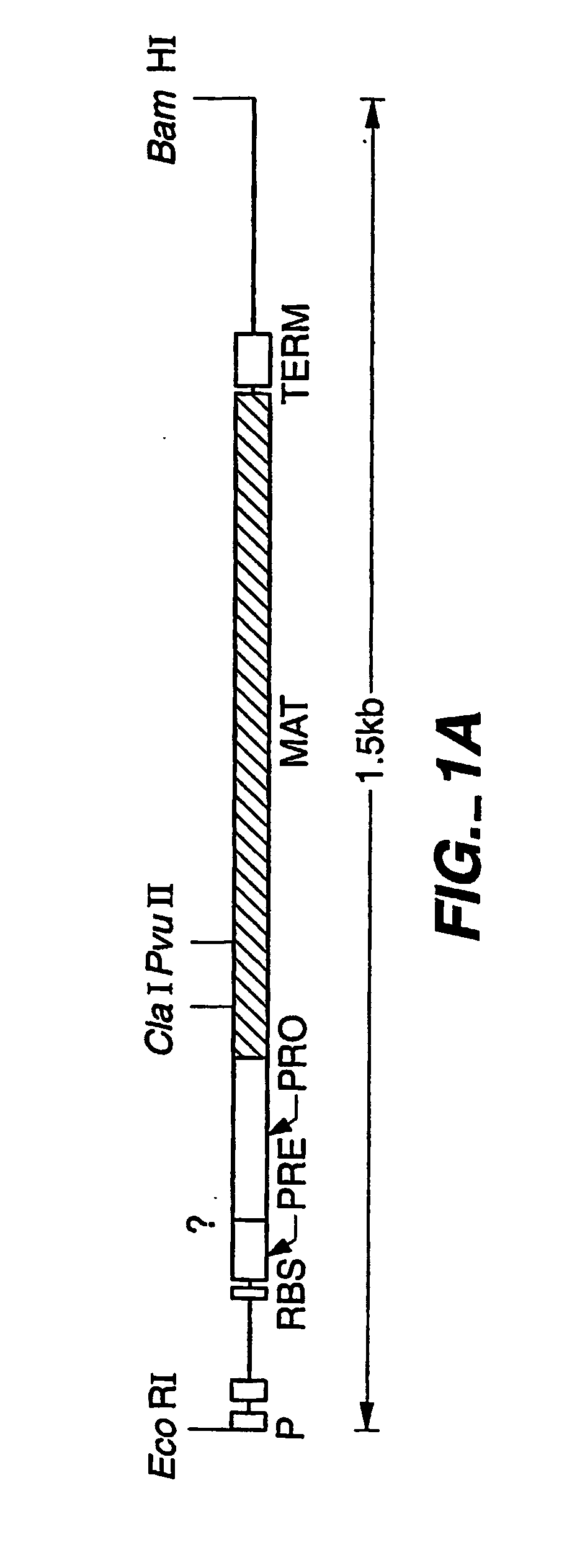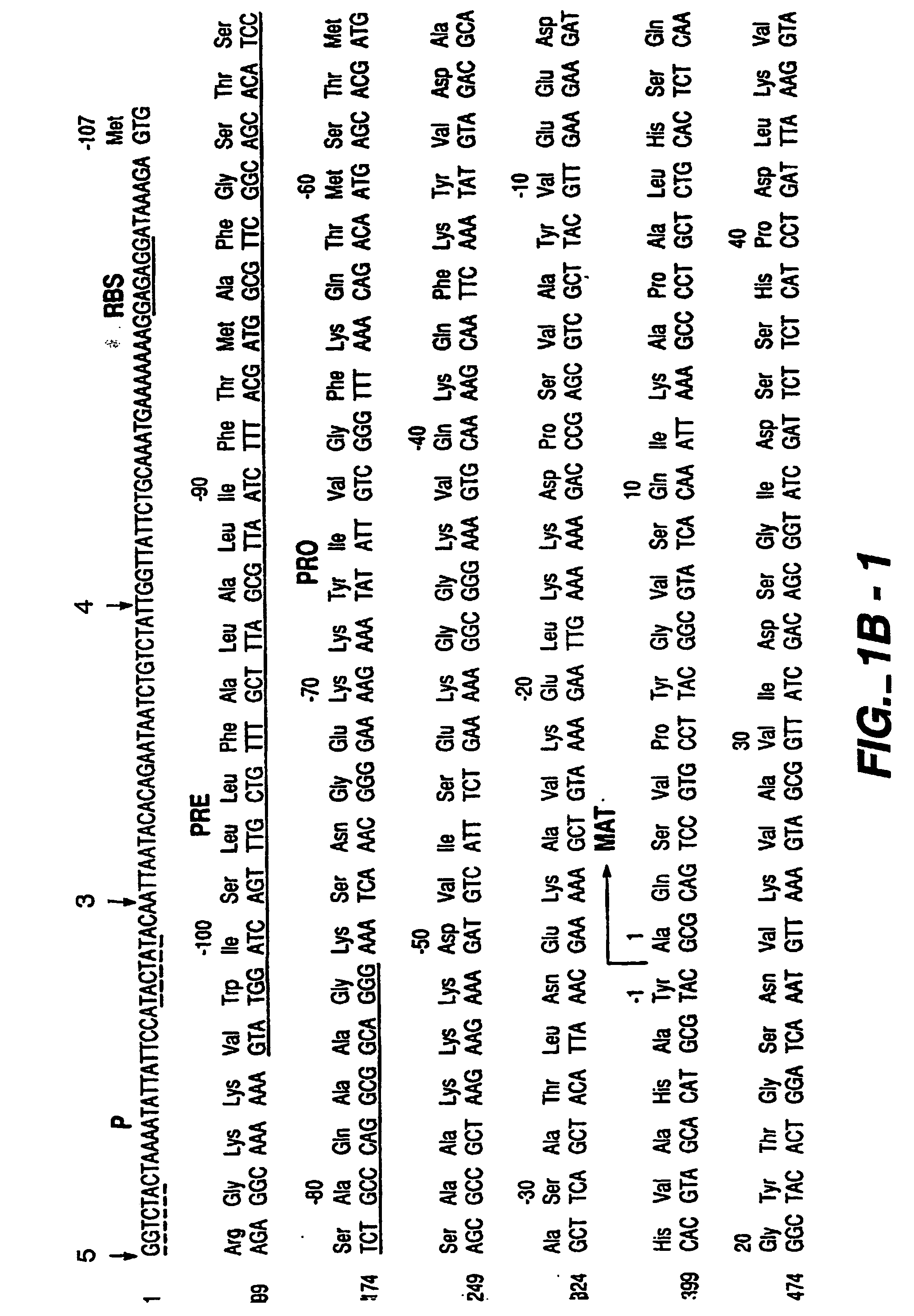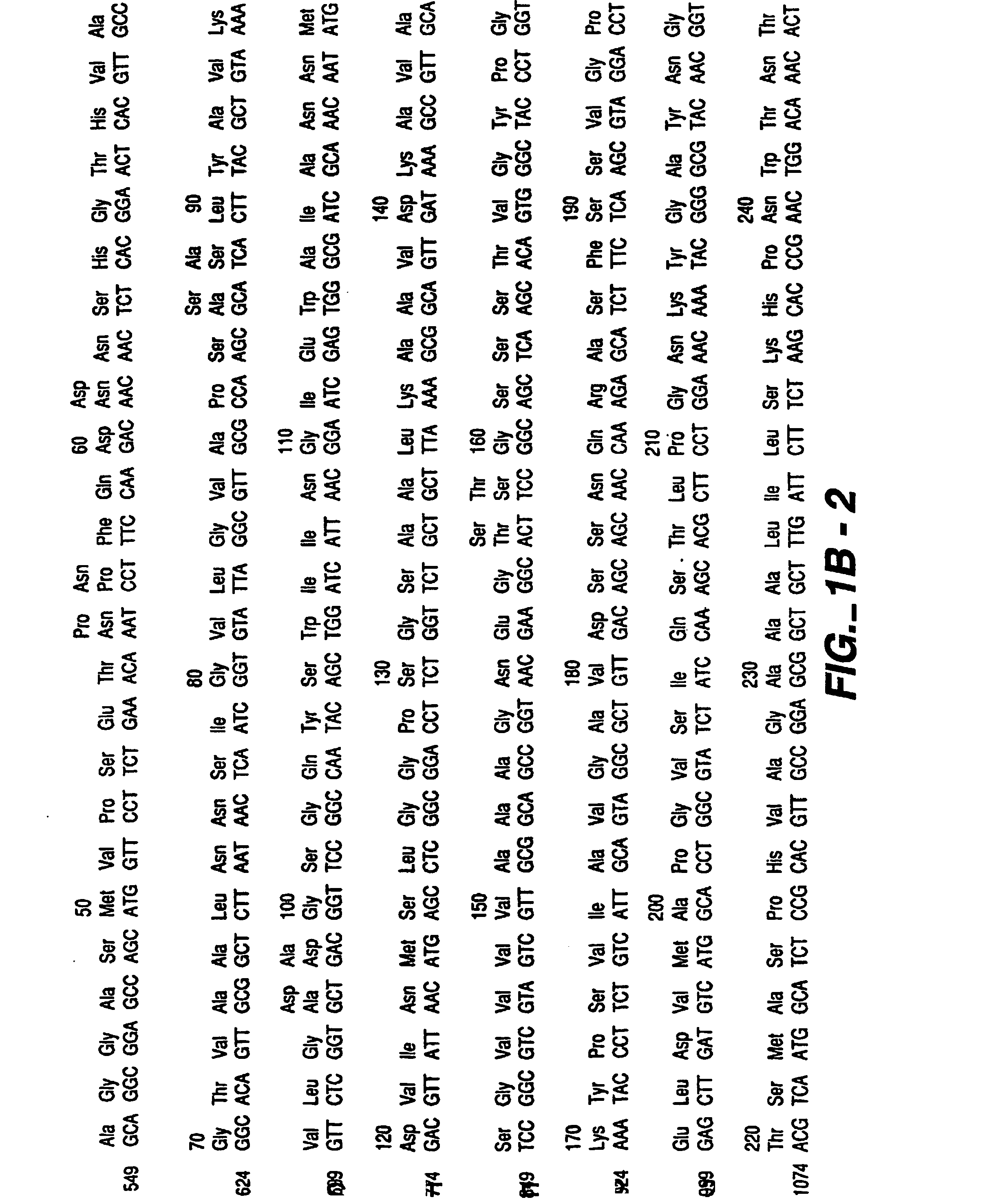Proteases producing an altered immunological response and methods of making and using the same
a technology of immunological response and protease, which is applied in the field of new protein variants, can solve the problems of increasing the incidence of allergic reactions to these proteins, affecting the safety of the product, and the use of proteases in the industry
- Summary
- Abstract
- Description
- Claims
- Application Information
AI Technical Summary
Benefits of technology
Problems solved by technology
Method used
Image
Examples
example 1
Assay for the Identification of Peptide B-Cell Epitopes
The peptides to be tested for antibody reactivity were suspended in 200 ul of DMSO (5 mg / ml). A stock plate was made by diluting 2 ul of each peptide into 200 ul of PBS / Tween-20 (25% Tween) in the corresponding well of a 96 well flat-bottom plate. This represents a total dilution of about 1:20,000. The final dilution used on the streptavidin plate was approximately 1:200,000. The peptides and stock plate can be frozen at −20° C. (or lower) until needed.
Streptavidin plates were blocked with RDI poly-HRP diluent (with enough plates used to give duplicates for each peptide and at least 10 controls), by placing 200 ul in each well, and allowing the plates to sit at room temperature for 30 minutes. The plates were washed 3 times with PBS / Tween-20 (25% Tween). The plates were slapped on an absorbent material (e.g., a diaper), to remove excess liquid. Then, 100 ul PBS / Tween-20 were added to each well. Then, 10 ul of stock plate pep...
example 2
Determination of Specific Altered Allergenicity Residue within an Epitope
In this Example, experiments conducted to determine specific residues with altered allergenicity within an epitope are described. The experiments described here utilized peptide variants based on the different epitopic sequences of the protease “P1.”
Thus, peptide variants based on the different epitopic sequences of protease “P1,” were produced (e.g., by a commercial vendor, such as Mimotopes, San Diego, Calif.), for example at amino acid positions 46-60, a first epitope region, 61-75, a second epitope region, 86-100, a third epitope region, 126-140, a fourth epitope region, 166-180, a fifth epitope region, 206-220, a sixth epitope region, 210-225, a seventh epitope region, and 246-260, an eighth epitope region, corresponding to BPN′. These peptides were then tested in the assay system described in Example 1. The set of peptides tested in these experiments included the following sequences:
PeptideSequence46...
example 3
Construction of Low Allergenic Stable Protease Variants
After determining the location of a B-cell epitope, protease variants are constructed using established protease engineering techniques known in the art. The variants are constructed so that a highly allergenic / immunologic amino acid sequence of a protease is replaced with a corresponding sequence from a less allergenic / immunologic homolog. In this instance, various residues are suitable for substitution to create a B. amyloliquefaciens mutant subtilisin (e.g., the protease P1 (BPN′-Y217L); the manufacture of protease P1 is disclosed in US reissue patent RE 34,606, European Patent 130,756 and U.S. Pat. No. 5,441,882). The variant P1 gene and chloramphenicol marker gene are flanked by a repeated sequence corresponding to sequence 5′ to the aprE locus for amplifying copy number by using chloramphenicol selection This P1 protease is suitable for production of protease variants by converting an amino acid selected from 46, 47, 48,...
PUM
| Property | Measurement | Unit |
|---|---|---|
| nucleic acid | aaaaa | aaaaa |
| concentrations | aaaaa | aaaaa |
| length | aaaaa | aaaaa |
Abstract
Description
Claims
Application Information
 Login to View More
Login to View More - R&D
- Intellectual Property
- Life Sciences
- Materials
- Tech Scout
- Unparalleled Data Quality
- Higher Quality Content
- 60% Fewer Hallucinations
Browse by: Latest US Patents, China's latest patents, Technical Efficacy Thesaurus, Application Domain, Technology Topic, Popular Technical Reports.
© 2025 PatSnap. All rights reserved.Legal|Privacy policy|Modern Slavery Act Transparency Statement|Sitemap|About US| Contact US: help@patsnap.com



